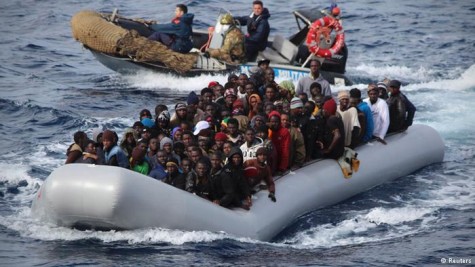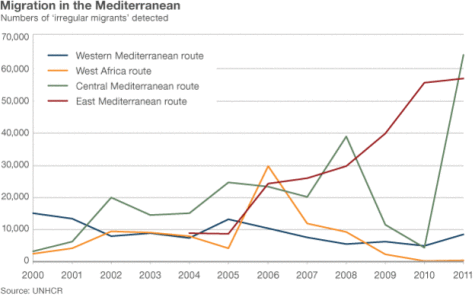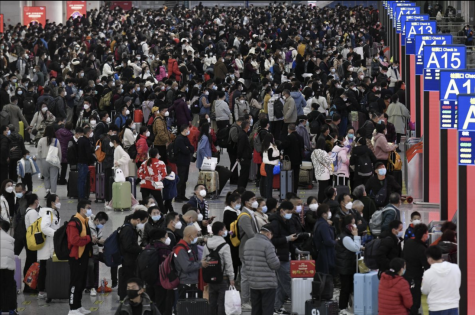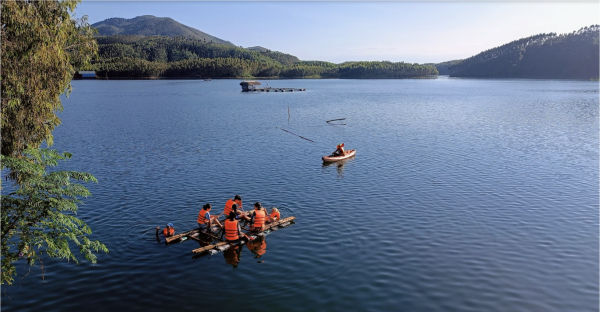The Everlasting Mediterranean Migrant Crisis

The life-risky voyages of crossing the Mediterranean Sea from Africa all the way to Europe taken place by African refugees (mainly victims of war) during the past years have been a major international issue. According to several related news reports, the migrants were boarding on overloaded and poorly equipped trawlers for their journey, which overweighed the boat, and the migrants ended up suffering from various incidents such as starvation from drifting and drowning from capsize. Such headlines are treated like “once-in-a-while issues” as they don’t often get broadcasted in a major scale. However, the reality is that there are still boats full of migrants sailing towards the coast of Europe and considerable amount of those vessels sink every day, burying hundreds under the Mediterranean seafloor.
On the 3rd of March 2015, more than one hundred migrants were struggling for survival on a sinking, inflatable dingy in the middle of the Mediterranean Sea. According to The Guardian, the inflatable dingy, known as Zodiak, used by the migrants was designed for 24 passengers. It was inevitable for the small vessel to sink as it was carrying a mass more than four times greater than what it could handle and most of all it wasn’t seaworthy enough for a voyage across the ocean. The survivors’ testimony from the International Organization for Migration (IOM) stated that “water slowly filled the dingy and around dozen migrants who stood on the edge of it for rescue overbalanced themselves and fell into the water.” A released video footage from the passing commercial vessel, the Zeran, shows the chaos of the incident as several men were abandoning the sinking boat, fuel cans were being emptied to create makeshift buoyancy aids, and once the Zeran dropped a rope ladder, everyone started clinging onto it. 91 migrants were rescued but five drowned and 40 died of an unknown cause on a second inflatable boat on the very same day.
Due to the high death rate witnessed from the incident on the inflatable dingy, experts claim that “this is the first major Mediterranean Migration Crisis since the accident on 19th of April, 2015, which is considered the worst disaster yet involving migrant smuggling to Europe.” The shipwreck had taken place overnight about 60 miles off the Libyan coast and 120 miles off the Italian island of Lampedusa. Italian coastguards have announced 28 survivors were rescued and 20 bodies were retrieved, but according to the UN’s refugee agency, UNHCR, the number of passengers reported by a survivor makes it possible that the number of undiscovered bodies could reach around 700. What was even more tragic was that according to Barbara Molinario, a spokeswoman for UNHCR, the migrants on the sinking boat had a chance of getting rescued as they spotted a nearby passing ship, but they had no way to send a signal for rescue.
From the beginning of the year all the way up to the accident on 19th of April, there were several major migration disasters and an estimated total of 1500 migrants died on their way to Europe. Experts say that “this rate is approximately 30 times higher than last year’s equivalent figure, which was itself a record.” A chart published by UNHCR shows the numbers of ‘irregular migrants (migrants of no legal resident status)’ detected in the Mediterranean and it can be shown that while the number of migrants taking the Western Mediterranean route and West Africa route are steadily decreasing, the number taking the Central Mediterranean route and East Mediterranean route are steadily and steeply rising. Geographically, the two routes which numbers of users are increasing have Italy as their final destination, making the nation mainly responsible for most irregular migrations to Europe.

Italy has been accepting hundreds of thousands of migrants from Africa during the past decade, and it seems like the country is starting to face its limits in population capacity and resources to aid the groundless migrants. Resultantly, Italy has been pressuring the EU to assist in dealing with migrants, but the EU didn’t show much signs of support. They opted not to replace the Italian-run operation Mare Nostrum in 2014, which saved about 100,000 lives but at the same time encouraged smugglers to launch more trips across the Mediterranean. However, after the tragic death of 700 migrants, the world starts to pressure the EU participation in relieving the crisis. Pope Francis, an outspoken advocate for greater European-wide participation in rescue efforts, called for action from St. Peter’s Square after hearing the latest news. Save The Children, one of the primary organizations working with migrants arriving in Italy, called the EU leaders to hold crisis talks as soon as possible and to resume search-and-rescue operations. Also, Italy’s Prime Minister and Matteo Renzi eagerly called for an urgent meeting with the EU leaders. Recently, the EU starts to show possible signs of cooperation as it pledge to expand Operation Triton, their own search-and-rescue operation; although in what way and to what extent is still unknown.
Despite this increase in efforts, the number of death has risen and the number of migrants arriving in Italy is still the same as last year, showing that the new tactics are not working well. As a result, on 22nd of April, 2015, Italian officials have announced possible immediate Military involvements to block maritime migrant movements as they are fully aware of when and where the smugglers will be gathering with their supplies. However, there are possibilities of even such bold actions not being successful as one survivor says “We prefer to die trying [to migrate] than stay back there [homeland] and die. Stay at home and get shot dead or maybe burnt to death, I just prefer to die while trying or survive.” This indicates that no matter what tragedies happened to their fellow migrants and no matter what action the European governments will take, the African migrants will still attempt their life-risking voyages no matter what.
Sources:
http://www.wsj.com/articles/wreck-of-migrant-ship-found-in-mediterranean-1431089150
http://www.theguardian.com/world/2015/may/05/dozens-of-migrants-feared-drowned-in-mediterranean
http://www.theguardian.com/world/2015/apr/19/700-migrants-feared-dead-mediterranean-shipwreck-worst-yet
http://www.theguardian.com/world/2015/apr/15/migrant-boat-sinks-mediterranean-passengers
http://www.bbc.com/news/world-europe-24521614http://www.cbc.ca/news/world/migrants-to-europe-italy-presses-eu-to-help-stem-deadly-tide-1.3043408


